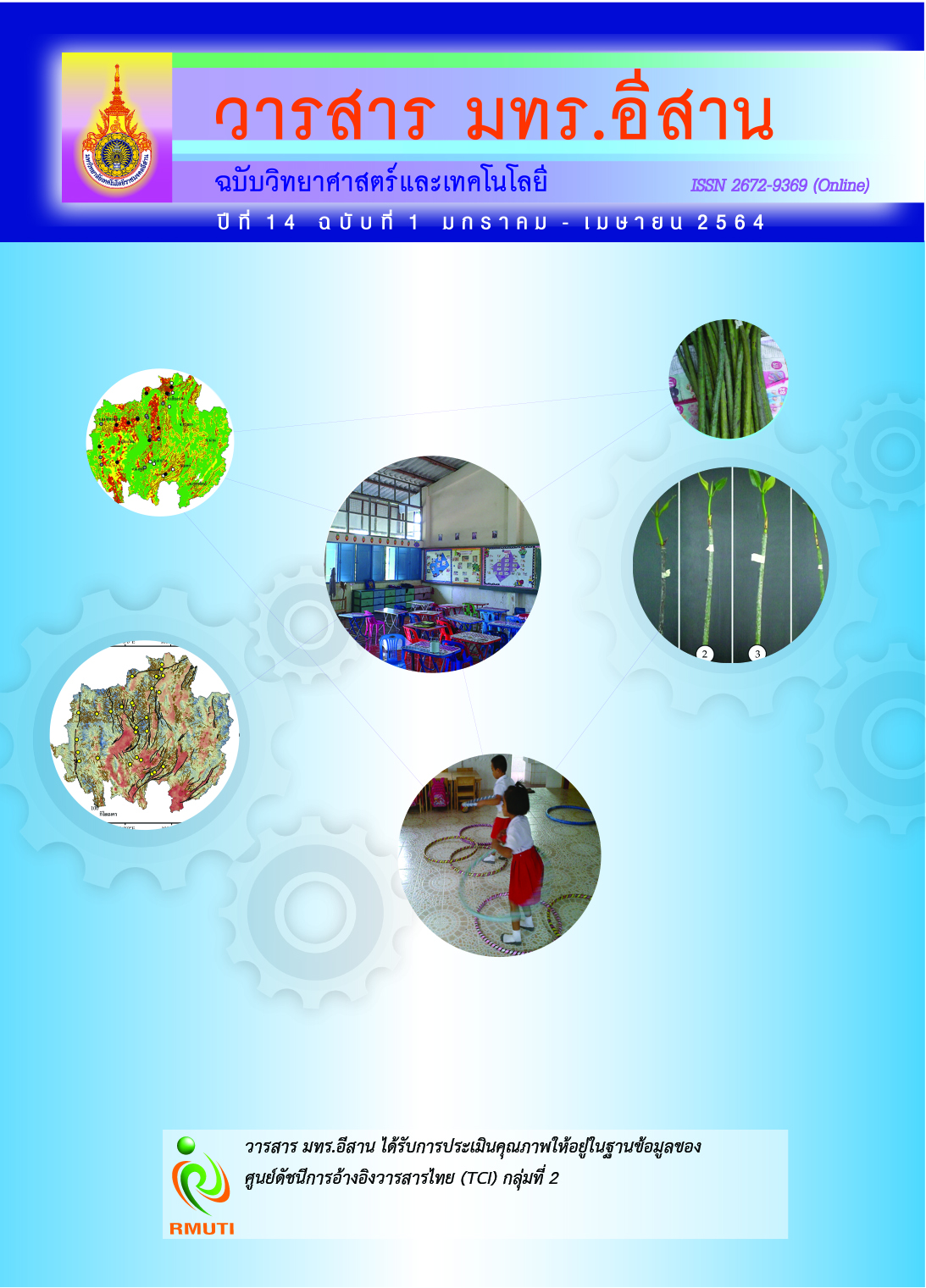Development of Geothermal Potential Resources Map using Land Surface Temperature from MODIS in Northern Thailand
Main Article Content
Abstract
Geothermal energy is heat energy within the earth’s interior that can be developed to produce electricity continuously. In many countries, remote sensing technology is applied to explore geothermal energy sources. Using the thermal infrared satellite data and associated with other data estimated and analyzed the land surface temperature for assessing the area of initial geothermal potential. In this study, Land Surface Temperature (LST) data from MODIS satellite is analyzed with rock and fault data, which are analyzed geothermal potential using the weighted overlay analysis technique in Northern Thailand. The results of the statistical analysis, the Pearson correlation between variables shown that the rock types was most closely related to the hot water temperature at the surface (0.587), distance from faults (-0.410), and land surface temperature anomaly (-0.376), respectively. The geothermal potential map was classified into 3 levels as follows high, moderate and low were 12.29, 36.32 and 51.39 %, respectively. The accuracy between the position and temperature level of the hot springs that appear in the area and the geothermal potential level obtained from the study found that 53.3 % accuracy, which classified as a moderate level.
Article Details
References
Department of Mineral Resources. (1986). Exploration of Geothermal Resources in Northern Thailand. Complete Report. (in Thai)
Qin, Q., Zhang, N., Nan, P., and Chai, L. (2011). Geothermal Area Detection Using Landsat ETM+ Thermal Infrared Data and its Mechanistic Analysis - A Case Study in Tengchong, China. International Journal of Applied Earth Observation and Geoinformation. Vol. 13, Issue 4, pp. 552-559. DOI: 10.1016/j.jag.2011.02.005
Zhang, N., Qin, Q., He, L., and Jiang, H. (2012). Remote Sensing and GIS based Geothermal Exploration in Southwest Tengchong, China. In Geoscience and Remote Sensing Symposium (IGARSS), 2012 IEEE International. Munich, Germany. pp. 5364-5367. DOI: 10.1109/IGARSS.2012.6352395
Tian, B., Wang, L., Kashiwaya, K., and Koike, K. (2015). Combination of Well- Logging Temperature and Thermal Remote Sensing for Characterization of Geothermal Resources in Hokkaido, Northern Japan. Remote Sensing. Vol. 7, Issue 3, pp. 2647-2667. DOI: 10.3390/rs70302647
Chan, H.-P., Chang, C.-P., and Dao, P. D. (2017). Geothermal Anomaly Mapping Using Landsat ETM+ Data in Ilan Plain, Northeastern Taiwan. Pure and Applied Geophysics. Vol. 175, Issue 1, pp. 303-323. DOI: 10.1007/s00024-017-1690-z
Darge, Y. M., Hailu, B. T., Muluneh, A. A., and Kidane, T. (2019). Detection of Geothermal Anomalies Using Landsat 8 TIRS Data in Tulu Moye Geothermal Prospect, Main Ethiopian Rift. International Journal of Applied Earth Observation and Geoinformation. Vol. 74, pp. 16-26. DOI: 10.1016/j.jag.2018.08.027
Raksaskulwong, M. (2013). Geothermal in Thailand: Alternative Energy. Technical Report. Bangkok: Department of Mineral Resources. (in Thai)
Department of Mineral Resources. (2012). Earthquakes Thailand. Prachinburi: Thurakan Charoen Kit Co., Ltd. (in Thai)
Department of Mineral Resources. (2007). Geology of Thailand (Second Edition). Bangkok: Dokbia Publishers. (in Thai)
Mwaura, D. and Kada, M. (2017). Developing a Web-Based Spatial Decision Support System for Geothermal Exploration at the Olkaria Geothermal Field. International Journal of Digital Earth. Vol. 10, Issue 11, pp. 1118-1145. DOI: 10.1080/17538947.2017.1284909
He, H., Hu, D., Sum, Q., Zhu, L., and Liu, Y. (2019). A Landslide Susceptibility Assessment Method Based on GIS Technology and AHP-Weighted Information Content Method: A Case Study of Southern Anhui, China. International Journal of Geo-Information. Vol. 8, Issue 6, pp. 1-23. DOI: 10.3390/ijgi8060266
Chiang Mai University. (2006). Potential Assessment of Hot Springs in Thailand. Final Report. Access (4 October 2018). Available (http://webkc.dede.go.th/testmax/sites/default/files/Content.pdf)
Department of Groundwater Resources. (2020). Groundwater and Geothermal Energy. Access (9 October 2020). Available (http://www.dgr.go.th/th/download/23?page=31)


